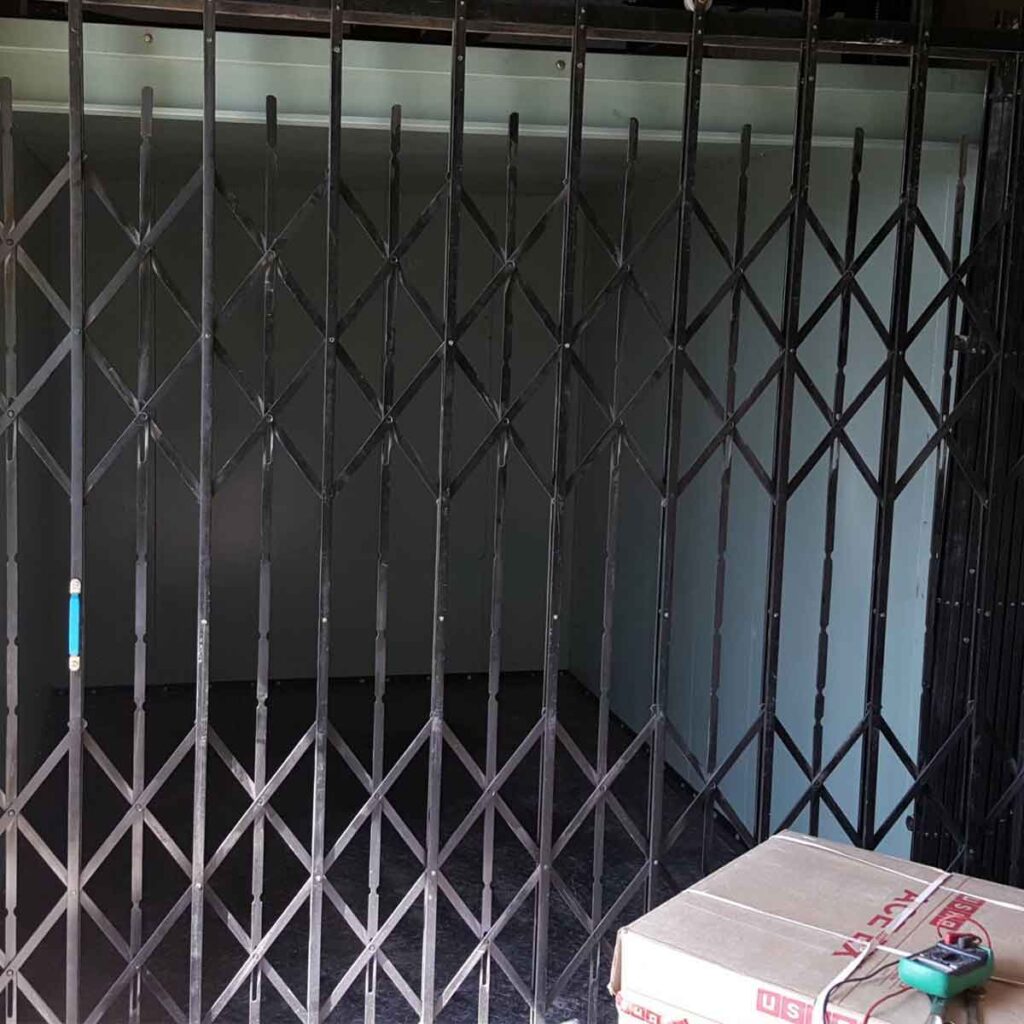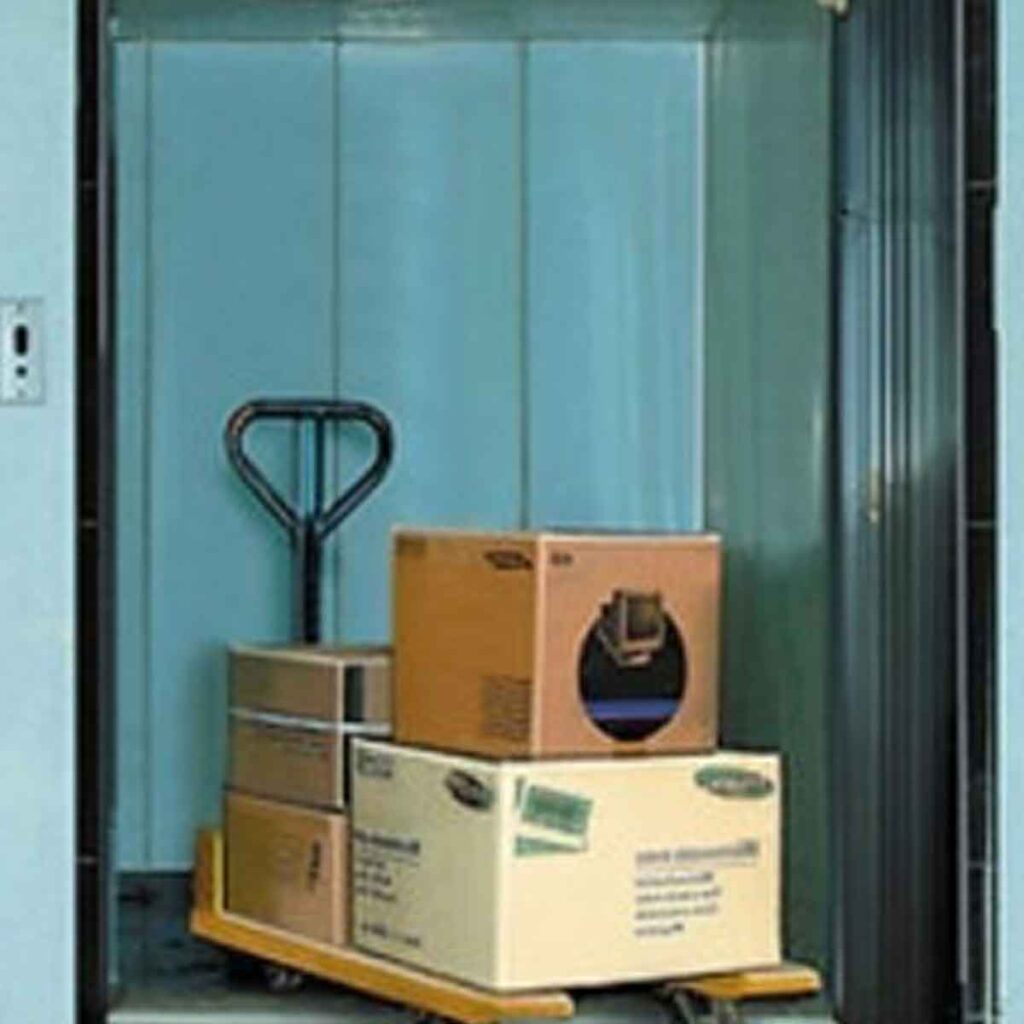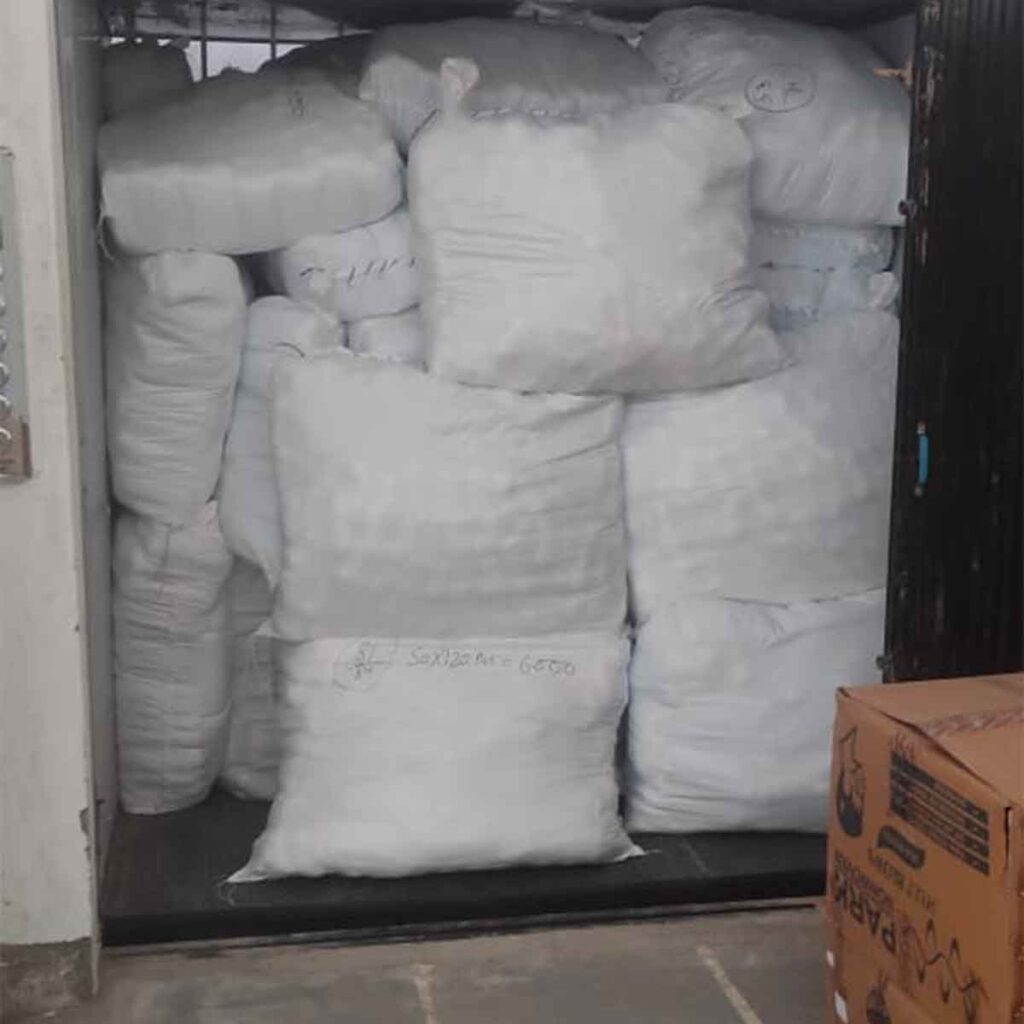Goods Lifts
Goods lifts, also known as freight elevators, play a crucial role in industrial, commercial, and retail environments. These specialized lifts are engineered to transport heavy goods, materials, and equipment vertically within a building, circumventing the limitations posed by stairs or manual labor. By ensuring safe and efficient movement of large volumes of goods, goods lifts enhance operational workflow and productivity.

The primary function of goods lifts is the vertical transportation of a diverse range of materials, from heavy machinery and construction materials to stock and retail products. This makes them indispensable in settings such as warehouses, factories, shopping centers, and distribution centers. The implementation of goods lifts not only reduces the physical strain on employees but also significantly speeds up the handling of bulky items, thereby optimizing time and labor costs.
There are various types of goods lifts designed to meet specific needs and operational requirements. Common types include hydraulic freight elevators, which use hydraulic systems for lifting heavy loads to various floors, and traction freight elevators, which utilize counterweights and electric motors for smoother and faster operations. Furthermore, specialized versions like dumbwaiters are ideal for transporting smaller items, such as food or documents, within multi-story buildings.
In addition to their functional versatility, goods lifts are built with robust safety features to handle heavy-duty operations reliably. Features such as reinforced steel structures, fail-safe mechanisms, and advanced control systems ensure that the lifts can operate under high-stress conditions without compromising safety.
The significance of goods lifts in today’s industrial, commercial, and retail sectors cannot be overstated. By streamlining the movement of goods and materials, these lifts contribute to a safer, more efficient working environment and play a vital role in maintaining the flow of operations across various industries.
Types of Goods Lifts
In the diverse landscape of goods lifts, several types are engineered to meet varying logistical demands. Among the most prominent and commonly utilized are hydraulic lifts, electric traction lifts, scissor lifts, and dumbwaiters. Each category serves specific operational needs, comes with unique advantages, and carries certain limitations that are pertinent to consider in their application.

Hydraulic Lifts operate using a hydraulic fluid system that pumps the lift to the required level. Known for their simplicity and cost-effectiveness, hydraulic lifts are highly reliable for moderate lifting heights and weights. They are particularly effective in buildings where the speed of movement is not a critical factor. However, they often require extensive pit and machine room space, which might be a constraint in some settings.
Electric Traction Lifts use a counterweight system, which allows them to operate efficiently at higher speeds and carry heavier loads across greater heights. These lifts are common in multi-story buildings due to their ability to travel further distances and their energy efficiency in comparison to hydraulic systems. One limitation is the typically higher installation and maintenance costs associated with their complex mechanical systems.
Scissor Lifts are characterized by their cross-braces which move in a scissor-like fashion, providing stability and precise vertical positioning of goods. Scissor lifts are versatile and can be mobile or stationary, making them suitable for a variety of industrial and construction applications. Nonetheless, they are best suited for applications with lower height requirements due to their limited vertical reach.
Dumbwaiters are smaller lifts designed primarily for transporting goods rather than people. They are commonly used in restaurants, hotels, and hospitals to move items like food, laundry, and medical supplies between floors discreetly and efficiently. While they offer convenience and save labor costs, their limited size and weight capacity mean they are not suitable for larger goods.
By understanding the specific advantages and limitations of each type of goods lift, businesses can make informed decisions tailored to their operational requirements, ensuring efficiency and effectiveness in their material handling processes.
Key Features and Specifications
When selecting a goods lift for your facility, understanding the key features and specifications is fundamental to making an informed decision. One of the primary considerations is the load capacity of the lift. This factor determines the maximum weight the lift can safely transport and varies significantly depending on the model and intended use. Choosing a lift with an appropriate load capacity is crucial to ensure that it meets your operational needs without compromising safety.

Lift speed is another critical specification that can impact the efficiency of your operations. The speed at which goods are transported can affect overall productivity, especially in environments where time is of the essence. Faster lift speeds enable quicker turnaround times, enhancing workflow and reducing downtime. However, it is essential to balance speed with safety, ensuring that the lift’s speed does not exceed what is safe for the load and operational environment.
The platform size of the goods lift is also a significant consideration, as it determines the dimensions of items that can be transported. When selecting a lift, it is important to consider the typical size of goods being handled and ensure that the platform provides adequate space. A well-sized platform not only accommodates various load sizes but also facilitates easier and more efficient loading and unloading.
Safety features are paramount in the selection of a goods lift. Modern goods lifts are equipped with various safety mechanisms such as emergency stop buttons, overload sensors, and safety gates. These features are designed to prevent accidents and ensure the well-being of operators and other personnel. Compliance with industry standards and regulations, such as those set by OSHA or other relevant bodies, is a critical aspect of safety. Ensuring that the lift adheres to these standards guarantees that it meets required safety protocols and legal requirements.
In summary, the key features and specifications of a goods lift, including load capacity, lift speed, platform size, safety features, and compliance with industry standards, play a pivotal role in operational efficiency and safety. By carefully considering these aspects, buyers can make an informed choice that best suits their specific needs and operational environment.
Installation and Maintenance
The installation of goods lifts is a meticulous process that requires careful planning and adherence to structural prerequisites. Key structural requirements include sufficient vertical space, adequate load-bearing capacity of floors, and appropriate access points. Before the actual installation, a thorough assessment of the site is carried out by professional engineers to identify any necessary modifications. The duration of the installation process varies depending on the complexity of the lift system and the specific site conditions, but generally ranges from several days to a few weeks.
During the installation phase, businesses might experience some disruptions in their operations. These disruptions can include restricted access to certain areas and potential noise disturbances. However, most installation teams work diligently to minimize such impacts by coordinating schedules with the business operations and implementing strategic planning.

Once the goods lift is operational, ongoing maintenance becomes crucial for ensuring its safety, functionality, and longevity. Regular inspections are mandatory and should typically be scheduled based on the manufacturer’s recommendations and local regulatory requirements. These inspections help in identifying wear and tear, potential technical issues, and necessary part replacements. Common troubleshooting tips, such as checking for unusual noises, verifying the proper alignment of the lift doors, and ensuring that control panels are functioning correctly, can preemptively address minor issues before they escalate.
Adhering to a strict maintenance schedule is paramount. This not only safeguards the operating personnel but also extends the life of the goods lift. Regular maintenance tasks might include lubrication of moving parts, inspection of electrical systems, and testing of emergency safety features. Engaging with certified maintenance providers and keeping accurate records of all performed tasks can significantly enhance the operational efficiency and safety of the goods lift.
Safety Considerations
When it comes to goods lifts, safety is paramount. Ensuring the well-being of both operators and transported goods involves a comprehensive understanding of the numerous safety features and practices associated with these essential devices. Several key safety features are standard in modern goods lifts, designed specifically to mitigate risks and enhance secure operations.
Common safety features in goods lifts include emergency stop buttons, which allow immediate cessation of lift movement in case of an emergency. These buttons are often strategically placed for easy and quick access. Another critical feature is overload protection, which prevents the lift from operating if the weight exceeds the recommended limit. This is crucial to avoid mechanical failures that could lead to accidents.
Safety gates are yet another important component, ensuring that goods remain securely within the lift during transit. Interlocks play a vital role as well, as they ensure that the lift doors remain closed during movement, and the lift will not operate unless the doors are properly secured. These features collectively create multiple layers of safety, reducing the likelihood of accidents.
Beyond built-in safety features, proper operation of goods lifts necessitates rigorous adherence to operational protocols. Training for operators is essential; individuals must be well-versed in the lift’s functionalities and emergency procedures. This training should be thorough and regularly updated to incorporate any changes or advancements in safety measures.
Regular safety inspections are non-negotiable. These inspections should follow a consistent schedule to ensure that all safety mechanisms are fully operational and to identify any potential issues before they exacerbate. Additionally, adhering to safety regulations established by local and international standards is a legal and ethical obligation, ensuring that the operation of goods lifts complies with current safety norms and best practices.
Implementing these safety considerations is crucial for maintaining a secure environment around goods lifts. By integrating these measures, businesses can safeguard both their personnel and their transported goods, fostering a safer, more efficient operational workflow.
Benefits of Using Goods Lifts
Goods lifts provide significant advantages across various industries by streamlining material handling processes and bolstering operational efficiency. One of the primary benefits is the remarkable increase in efficiency. By automating the transportation of goods between different levels of a building, goods lifts mitigate the need for manual labor and expedite the movement of materials. This efficiency boost can be especially critical in high-volume environments such as warehouses, factories, and retail stores, where time is of the essence.
Another key advantage is the reduction in manual labor. Goods lifts significantly lessen the physical strain on employees, allowing them to focus on more specialized, value-added tasks. This not only enhances productivity but also contributes to employee satisfaction and retention by minimizing the risk of workplace injuries related to heavy lifting. Improved workplace safety is paramount, and goods lifts help achieve this by reducing the incidents of accidents associated with manual handling of goods. By providing a secure and reliable means of transporting items, businesses can ensure a safer working environment.
Furthermore, goods lifts contribute to better organization within a facility. The systematic transport of goods allows for a more orderly storage and retrieval process, making inventory management more efficient. With goods lifts, businesses can optimize their storage spaces and streamline workflow, which is essential for maintaining productivity in busy operations. Real-world examples highlight these benefits clearly. For instance, a case study from a leading retail chain showed that installing goods lifts in their back-of-house operations reduced merchandise handling time by 40% and accidents by 25%, resulting in significant cost savings and improved customer service.
Overall, the advantages of utilizing goods lifts extend beyond just tangible improvements in operations. They provide a framework for a safer, more efficient, and well-organized workplace, driving business success in the competitive market landscape.
Choosing the Right Goods Lift for Your Needs
Selecting the appropriate goods lift for your specific requirements is a critical step in ensuring efficient operations and safety. Various factors need to be considered to make an informed decision. These factors include the nature of the goods being transported, the frequency of use, the available space for installation, and budget constraints. Understanding these elements will help you choose a goods lift that aligns with your operational demands and financial capacity.
First and foremost, identify the type of goods you intend to transport. Goods lifts come in a variety of designs, tailored for different types of cargo, whether they are pallets, large industrial equipment, fragile items, or even vehicles. Knowing the weight and dimensions of your typical load can help in selecting a lift with the appropriate capacity and dimensions.
Next, consider the frequency of use. For high-frequency operations, such as in warehouses or manufacturing facilities, a durable and high-capacity lift is essential to withstand continuous usage. Conversely, for less frequent usage, a smaller, perhaps simpler, lift might suffice. Durability and efficiency should guide your choice to ensure the lift can handle the operational demand without frequent breakdowns.
Space availability is another crucial consideration. Different goods lifts require different amounts of space for installation. Evaluate the potential installation site for limitations in height, floor space, and structural support. Some lifts are designed for tight spaces, while others need ample room to operate efficiently. Ensuring that your selected lift fits in the available space can prevent costly modifications and installation delays.
Finally, budget constraints play a significant role in the selection process. Goods lifts vary widely in cost, depending on their capacity, features, and brand. While it’s essential to stay within budget, it’s equally important to consider long-term value and reliability. Investing in a higher-quality lift might result in lower maintenance costs and longer lifespan, offering better value over time.
By carefully evaluating these factors—type of goods, frequency of use, available space, and budget—you can make a well-informed decision that ensures the efficiency, safety, and reliability of your goods lift. Utilize this checklist to guide your selection process, aligning your choice with your operational needs and resources.
Future Trends in Goods Lifts
As the industrial landscape continues to evolve, the goods lift industry is also experiencing significant advancements. These emerging trends not only enhance the functionality and efficiency of goods lifts but also set the stage for the future of material handling solutions. Among the most notable developments is the integration of automation and smart technology. Automated goods lifts offer heightened precision and reliability, reducing the need for human intervention. Such automation is particularly beneficial in high-volume environments where minimising downtime is essential.
Another critical trend is the incorporation of the Internet of Things (IoT). IoT-enabled goods lifts facilitate predictive maintenance by providing real-time data on performance metrics. This data allows operators to identify potential issues before they escalate, thereby reducing unexpected breakdowns and maintenance costs. Predictive maintenance is a game-changer, ensuring that goods lifts remain operational and efficient, ultimately improving overall productivity.
Energy efficiency is also becoming a focal point within the goods lift industry. Modern designs are increasingly prioritising the reduction of energy consumption. Innovations such as regenerative drives, which convert kinetic energy back into electrical power, and energy-efficient motors are being implemented to lower the carbon footprint of goods lifts. These environmentally conscious advancements not only support sustainability goals but also lead to significant cost savings in the long term.
Furthermore, the regulatory landscape surrounding goods lifts is evolving. New regulations are being introduced to enhance safety and compliance standards. For instance, stringent guidelines on the use of fire-resistant materials and improved safety features are now commonplace. Staying abreast of these regulatory changes is crucial for businesses to ensure their goods lifts meet current standards and avoid potential liabilities.
These trends indicate a promising future for goods lifts, characterised by enhanced automation, predictive capabilities, energy efficiency, and regulatory compliance. By staying informed and adapting to these innovations, businesses can optimise their operations, improve safety, and achieve greater efficiency in their material handling processes.

Pingback: Vehicle Lifts Manufacturers